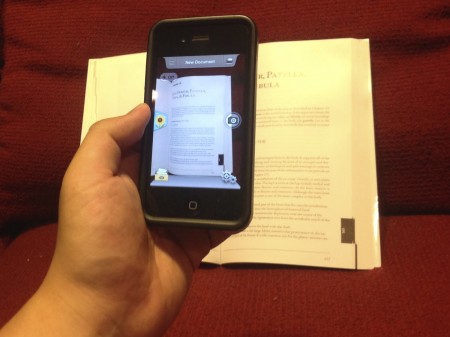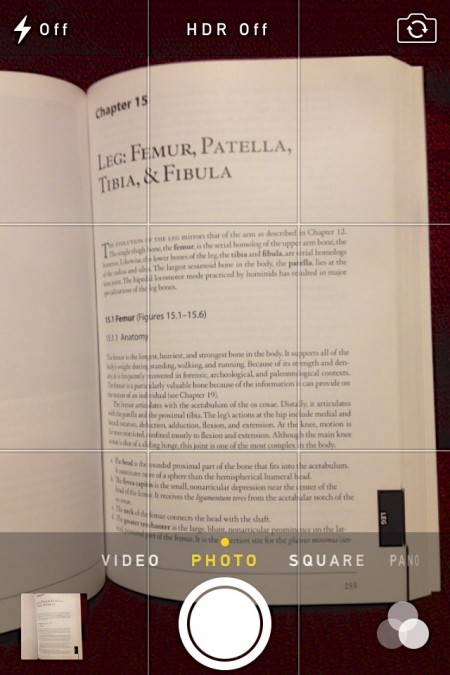Back when I was an MA student, all the way in the early 2000s, I spent a lot of time at Ellis Library photocopying articles. As I pursued my graduate degrees, technology advanced and journal articles online became more prevalent. A divide grew between the typically newer articles online and the older articles that are only accessible through the library collection. In my research for Anthropomotron, I had to dig deep into old stature estimation articles, but I really did not want to add to my paper collection. I needed an easy way to turn a paper article into a PDF, with as few steps as possible. Luckily, mobile app technology has a solution. There are a few apps that turn your phone or tablet into a document scanner, but I will focus on my favorite: DocScan.
DocScan lets you take a photograph of a document and it will do its best to isolate the page from the background. If it gets the boundaries wrong, you can manually tweak the corners. Then it processes the image to be a nice rectangle. Repeat the procedure for each page and it will string them together into a PDF. Lastly, you can send it out to different clouds, emails, or whatnot for storage.
While this workflow is already pretty neat, it has one additional feature that elevates the app to a new level of coolness. For example, instead of a flat sheet, what if you are photographing an open book with a curved surface? DocScan will read the curve and flatten it appropriately into a flat page. Here is a demonstration of the workflow:

{ Find something to scan and get it lined up in the screen (e.g., White and Folkens, 2005). }

{ Here is the screen view. Like any camera app, the big button takes a picture. }

{ Here is where the magic happens! Drag the nodes to fit the dimensions and curvature of the page. }

{ DocScan creates a rectangle out of the curves. It also adjusts the colors to get some crispness. }
DocScan is not a perfect replacement to photocopying a document. Once you get a groove going on a photocopier, you cannot beat its sheer speed. Also, if a stack of actual paper is your endgame, the copier is the way to go. However, DocScan’s advantages outweigh its limitations. I’d rather scan documents in the comfort of the library stacks instead of standing in the muggy copy room. DocScan is also free after the initial purchase, if you even choose to unlock it, so depending on how much copying you need done there might be some savings. The best part: you get to pretend to be James Bond as you take spy photos of the document you want. Try that standing next to a photocopier.
References
White TD, Folkens PA. 2005. The Human Bone Manual. Amsterdam ; Boston: Elsevier Academic.